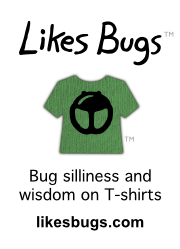On Saturday September 29th, the Wittenborns went boating on Lake Travis, west of Austin, and moored at an island to do some swimming. 16-year-old Brian Wittenborn swam ashore to explore the island. At the center of the island he discovered a communal spider web. Spiders had made a small room out of webbing, complete with web walls and web ceiling. Brian returned to the beach and told everyone to come see what he found. Together they returned to the web and sat in the small, low-roofed room. All around them, occupying every square foot of the web, were spiders with nearly two-inch leg spans.
The island was the extremely popular Starnes Island, a tiny island in Lake Travis where, all week long, countless people stop to swim or fish or simply rest. It is also called “Snake Island” or “Rattlesnake Island,” but I think the best name would be “Spider Island.”
A few days after Brian’s discovery, Heidi Wittenborn, a naturalist friend of mine who was on the trip that Saturday, wrote me and Mike Quinn (among others) describing what they saw. Fortunately, I had just returned from Lake Tawakoni. I decided this was a great excuse to buy that kayak I’d been wanting to buy for years. I spent the morning of October 4th getting geared-up and educated at the north-Austin REI (thank you Mary!), and I was finally on the island by 6:00pm.
Here is a 2.5-minute sampling of what I saw. The night video was taken on October 6th, a Saturday night. Compare what the spiders are doing with what the humans are doing that Saturday night—you can hear the humans—but please don’t include in your comparison what the human with the video camera is doing this Saturday night.
I would often be hidden somewhere in the middle of the island listening to people in boats and on the beaches all around me. On several occasions I’d hear a boy leading his dad into the woods to show him the web. It seemed that children were the only ones to venture inland. The web on Starnes Island is no where near as impressive as the webs at Lake Tawakoni, which may be why it went unreported for so long. I suspect children have been leading their parents up to the web since at least early September.
The spiders appear to be the same as those at Lake Tawakoni, the Tetragnatha guatemalensis, although the spiders on Starnes Island have not been officially identified yet. I was unable to get photos that did a good job of capturing the web-enclosed small room, but much of the above video was shot from within the room. A rain storm wrecked the room the following Monday, rendering it much less impressive.
I have been visiting the island periodically since then to study the spiders. The spiders were making dense sheet webs and dense tangle webs, just as they were at Lake Tawakoni. I even saw the first stage of a sheet being made, but I’ll share more about that later. Just as was occurring at Lake Tawakoni, the midges were coming in from the lake in the evening, and the spiders would feast on them. I did see one behavior on Starnes Island that I didn’t see at Lake Tawakoni: the spiders were making little tufts of web in the sheets.
On October 10th I went exploring and mapped out the web on a satellite image of the island. I estimate that communal webs occupied 3,500 square feet of the island and that the web was dense over about half that area. The island has about 20,000 square feet of wooded area, so the spiders had taken over almost a fifth of the island, not including the beaches.



